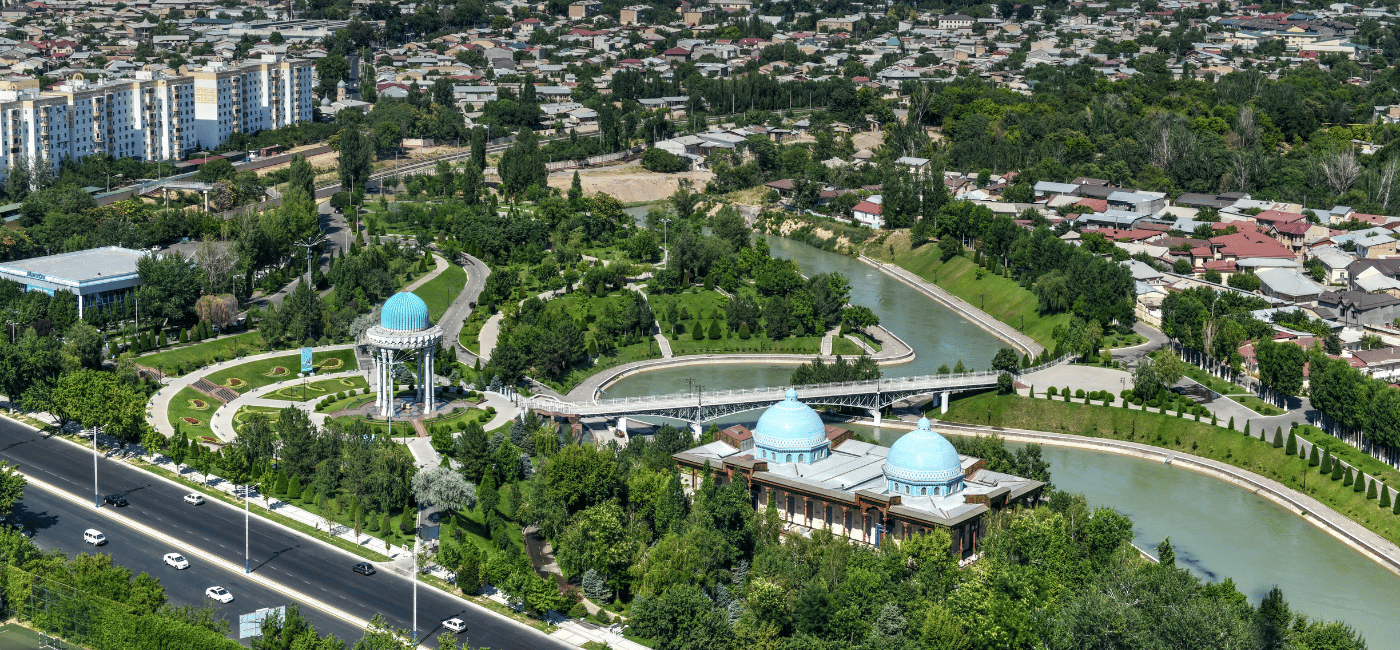Top 10 Largest Cities of Uzbekistan

The Largest Cities of Uzbekistan
Uzbekistan is home to several major cities that are economic, cultural, and historical centers. Below are the largest cities in the country, ranked by population and significance.
1. Tashkent – Capital & Largest City
- Population: Over 2.8 million
- Overview: As the capital of Uzbekistan, Tashkent is the political, economic, and cultural hub of the country. It features modern skyscrapers, Soviet-era buildings, bazaars, and a vibrant nightlife. Key attractions include Chorsu Bazaar, Hazrat Imam Complex, and the Tashkent Metro.
2. Samarkand – Ancient Silk Road City
- Population: Around 600,000
- Overview: One of the oldest inhabited cities in the world, Samarkand is famous for its UNESCO-listed monuments, including Registan Square, Shah-i-Zinda, and Gur-e-Amir Mausoleum. It remains a major tourist and historical center.
3. Namangan – Industrial & Cultural Center of Fergana Valley
- Population: Around 590,000
- Overview: The largest city in the Fergana Valley, Namangan is an industrial and agricultural center, famous for its horticulture, textiles, and crafts. It hosts the annual Flower Festival, attracting visitors from across the region.
4. Andijan – Economic Hub of Eastern Uzbekistan
- Population: Around 450,000
- Overview: Andijan is one of Uzbekistan’s oldest cities, historically significant as the birthplace of Babur, the founder of the Mughal Empire. Today, it is a major industrial and trading city near the Kyrgyzstan border.
5. Bukhara – Historical & Architectural Gem
- Population: Around 280,000
- Overview: A UNESCO World Heritage city, Bukhara is one of Central Asia’s best-preserved Silk Road cities, home to over 140 architectural monuments, including Poi Kalyan, Ark Fortress, and Lyabi Hauz.
6. Nukus – Capital of Karakalpakstan
- Population: Around 310,000
- Overview: Nukus is the capital of Karakalpakstan, an autonomous republic in Uzbekistan. It is known for the Savitsky Art Museum, which houses one of the world’s largest collections of Soviet avant-garde art.
7. Qarshi – Energy & Agricultural Center
- Population: Around 275,000
- Overview: Qarshi (Karshi) is a major agricultural and gas-producing region in southern Uzbekistan. The city has historic sites such as the Odina Mosque and serves as a gateway to the Kashkadarya region.
8. Fergana – Cultural Heart of the Fergana Valley
- Population: Around 275,000
- Overview: A cultural and economic center, Fergana is known for handicrafts, silk production, and picturesque landscapes. It serves as a gateway to the entire Fergana Valley region, which is shared with Andijan and Namangan.
9. Jizzakh – Gateway to Nature & Adventure
- Population: Around 180,000
- Overview: Jizzakh is an important agricultural city, famous for its cotton production and natural attractions, including Zaamin National Park and Nuratau Mountains, making it a hub for eco-tourism.
10. Urgench – Modern City Near Ancient Khiva
- Population: Around 160,000
- Overview: The capital of Khorezm region, Urgench is a transportation hub for travelers heading to Khiva, a UNESCO-listed Silk Road city. It has a mix of modern infrastructure and historical significance.
Conclusion
Uzbekistan’s largest cities offer a diverse mix of history, culture, economy, and tourism. While Tashkent is the dominant modern capital, cities like Samarkand, Bukhara, and Khiva preserve the country’s rich Silk Road heritage, while industrial centers like Andijan and Namangan drive economic growth.
Related topics

